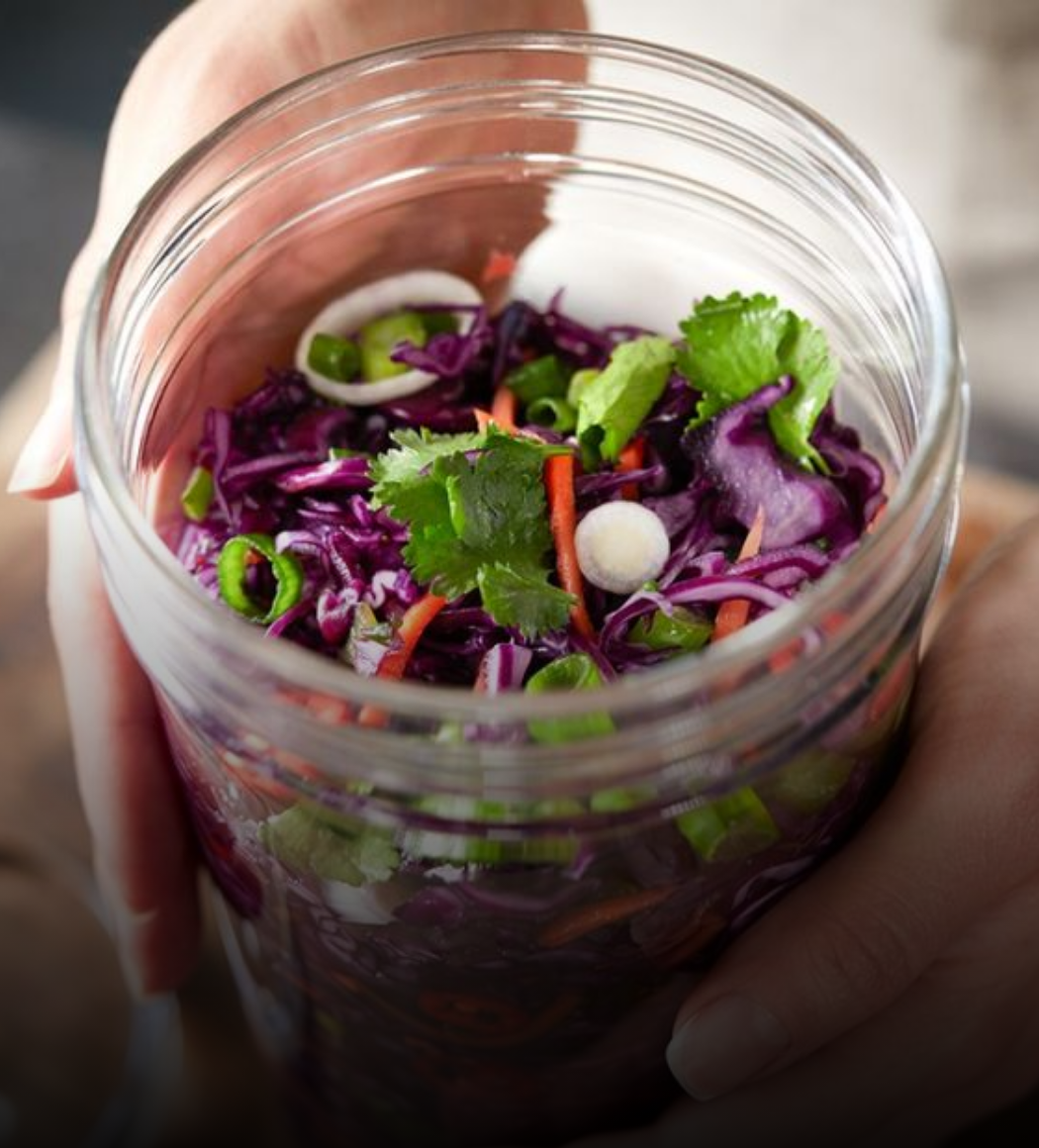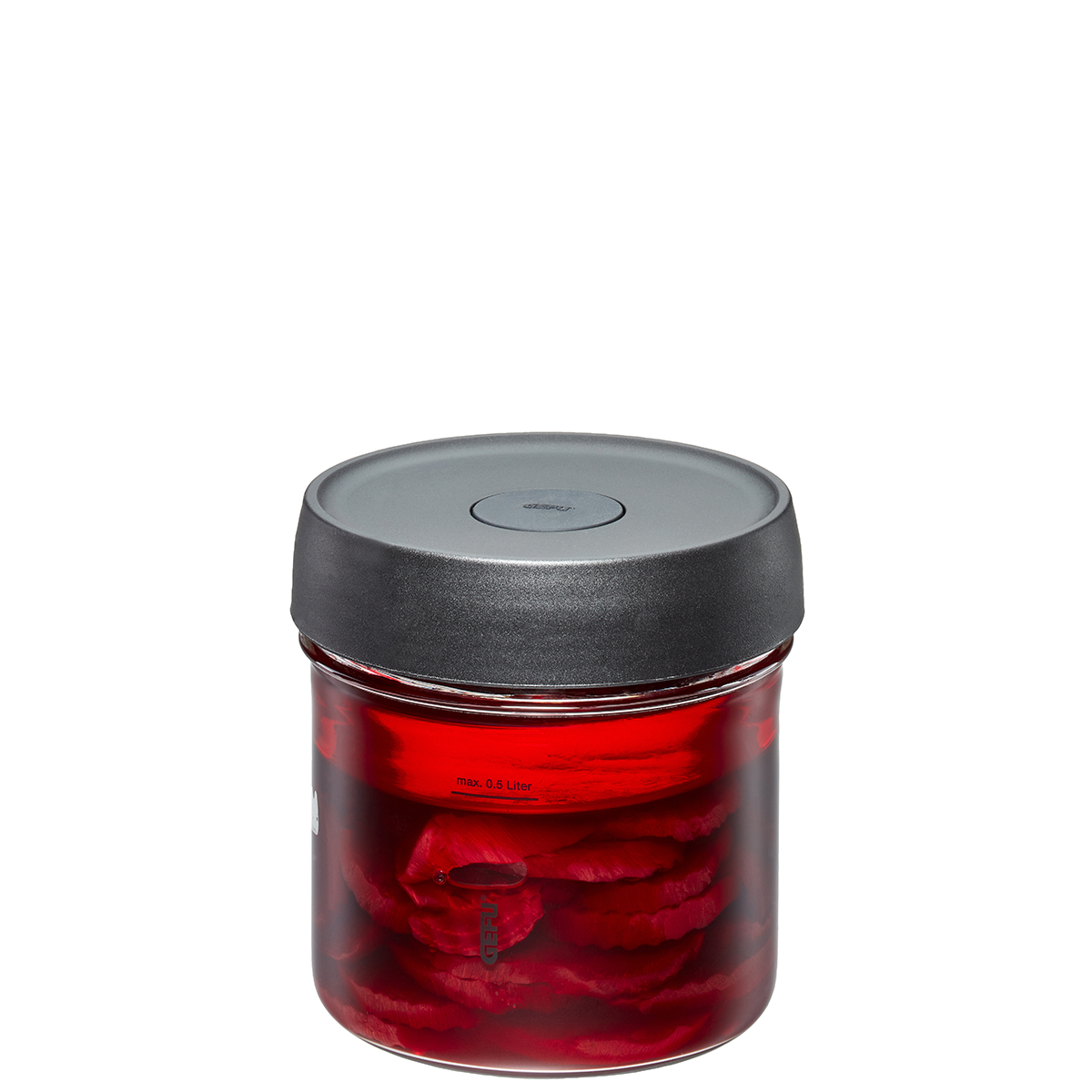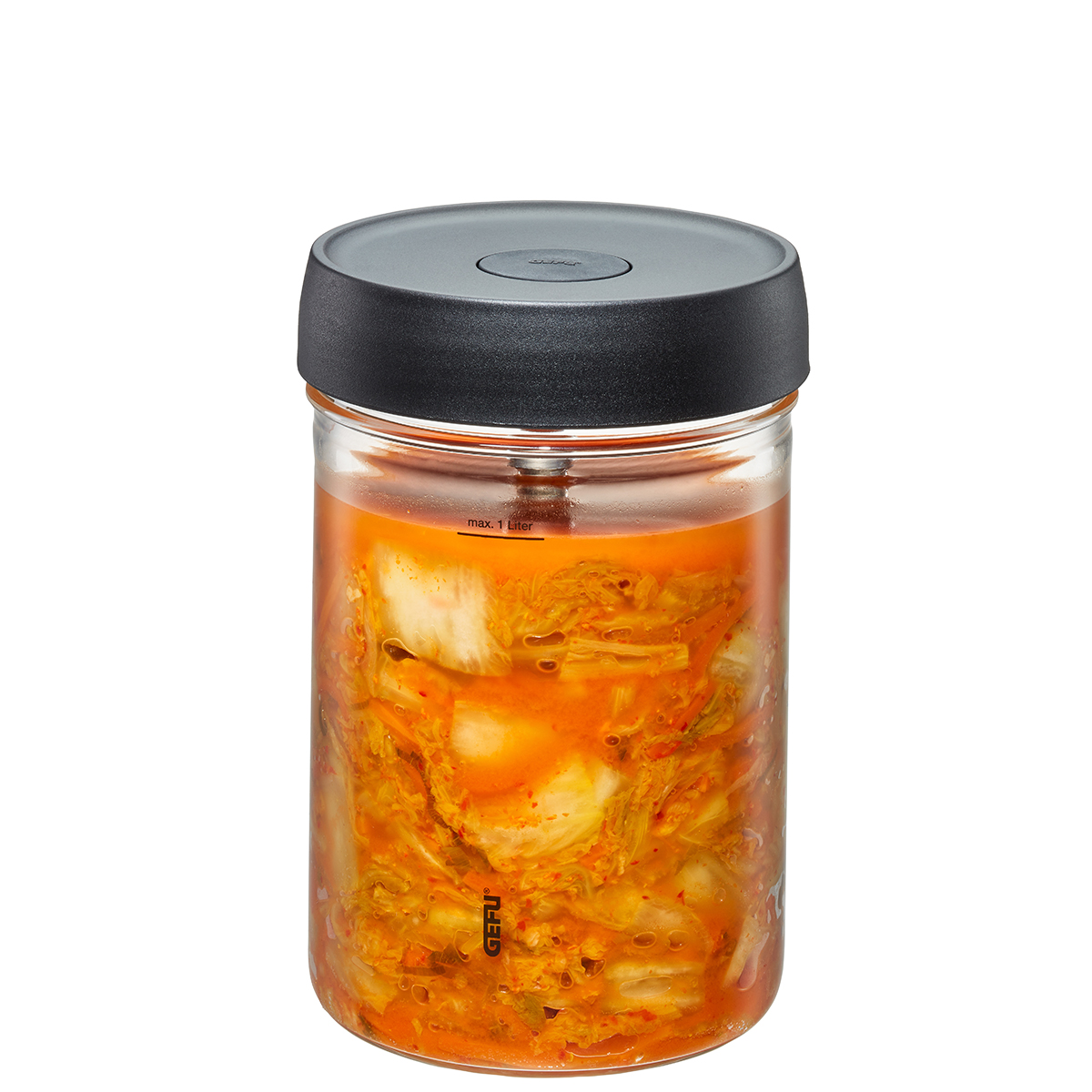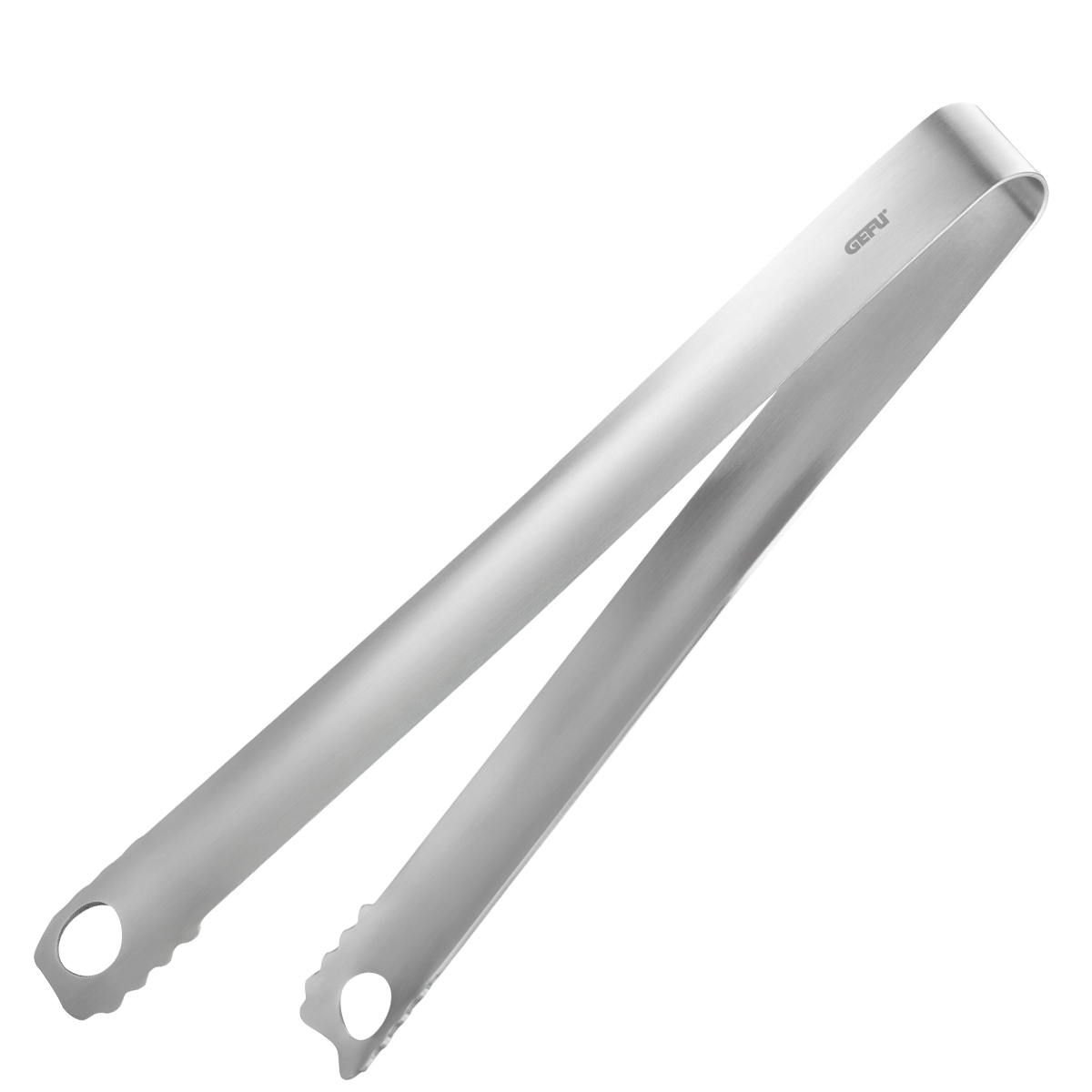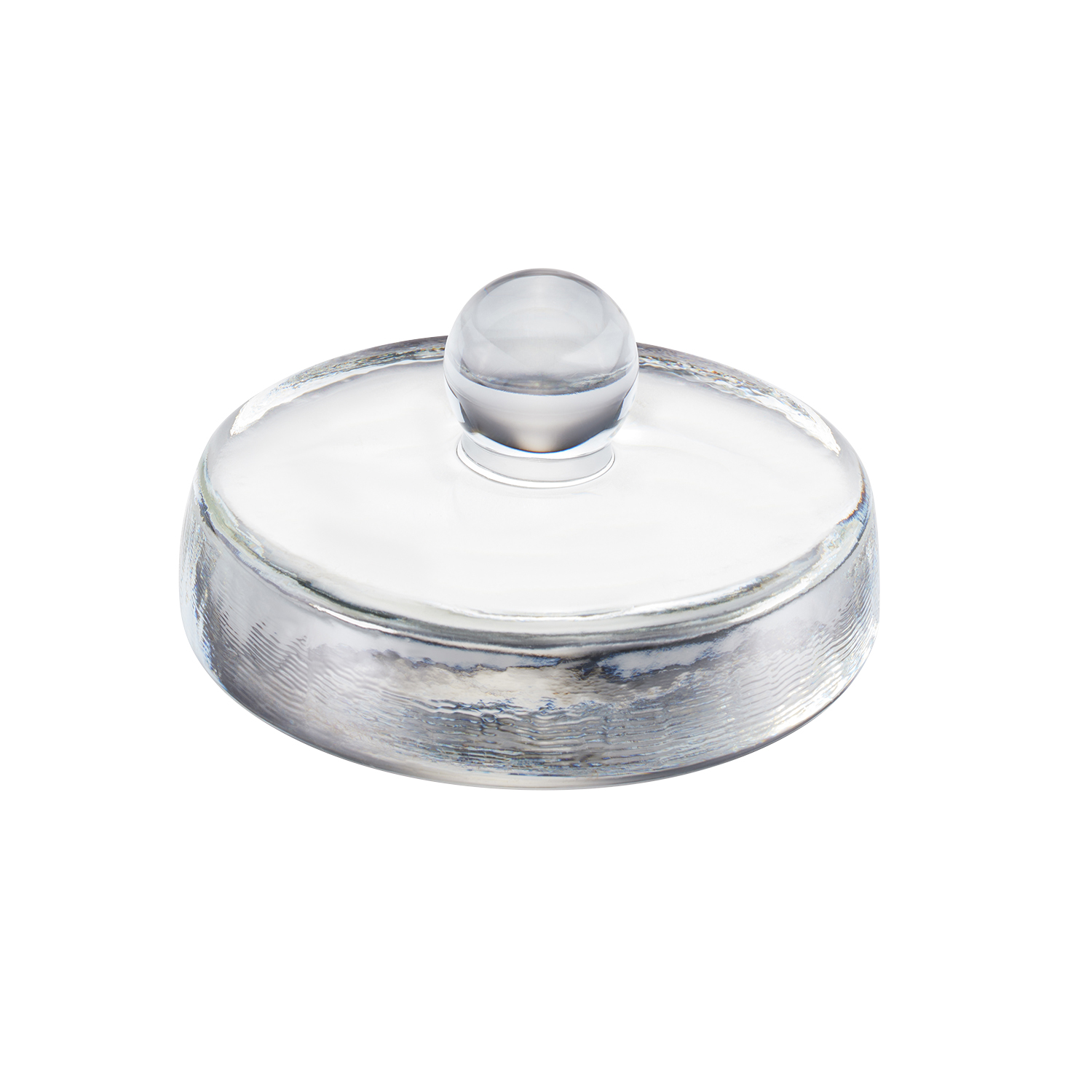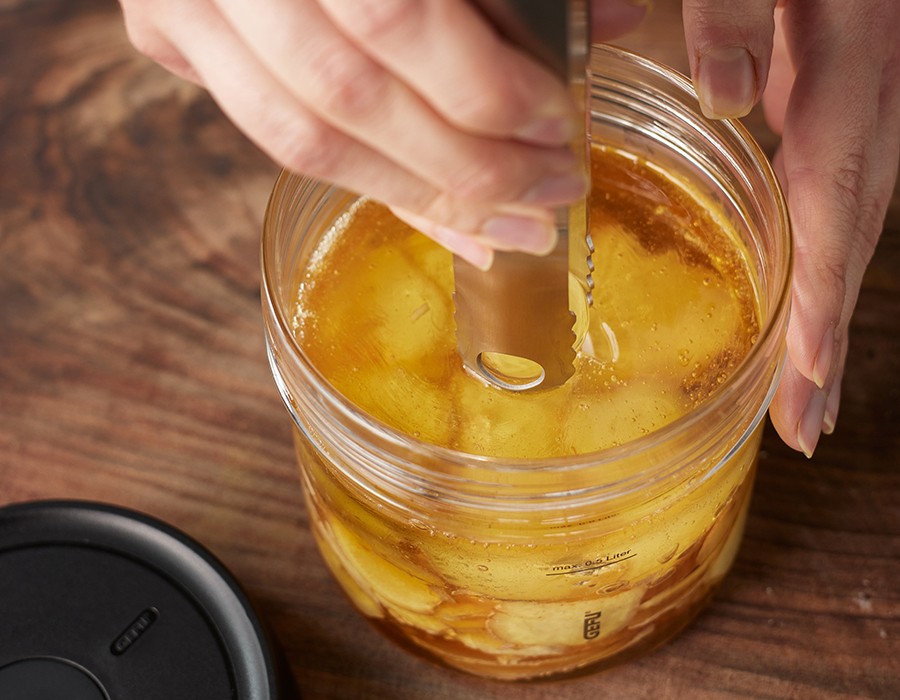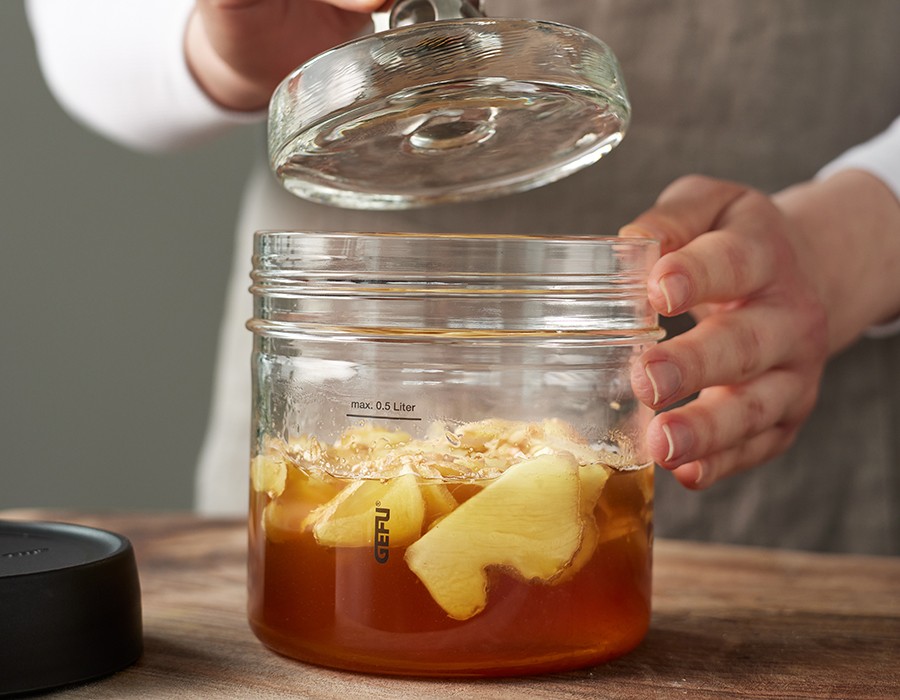What is fermentation?
Fermentation is a classic preservation method that has been used all over the world for thousands of years to preserve food for longer.
Probably the best-known fermented dish in Germany is sauerkraut, the delicious seasoning paste miso comes from Japan, in Korea kimchi is part of every meal and in Greenland people enjoy fermented fish..
Wild fermentation is very simple and requires no additives: Chop the vegetables, add salt, fill into a sealable jar that can be vented, preferably a NATIVO fermentation jar from GEFU with integrated Ferment Vent System, fill up with brine, weigh down the vegetables, seal the jar and leave at room temperature for 5 to 20 days. Voilà! After about three days, the fermentation process begins and natural microorganisms transform the vegetables into super-tasty slow food.

How does a fermentation actually begin?
Either through wild fermentation, where the bacteria for the fermentation process are already naturally present on the vegetables, fruit or simply in the environment. Examples of this are sauerkraut and kimchi.
Or it starts with a starter culture, in which fermentation bacteria or even the remains of a finished ferment are added to the basic products at the beginning, as is the case with kombucha or kefir, for example.
Fermentation is zeitgeist
Thanks to our ever-growing awareness of healthy eating, sustainability and the trend towards growing your own vegetables in your own garden, fermentation is absolutely back in fashion. What's more, fermented dishes are wonderfully colourful, extra aromatic and incredibly healthy.
With our NATIVO fermentation set for the curious and beginners, you can now try out this great preparation method easily and safely at home. We'll also show you how it works and reveal some particularly tasty recipes with guaranteed flavour. True to the motto:
GEFU- Discover your cooking skills.


Because ...
...vegetables and fruit can be preserved for longer without any temperature.
...
fermented foods contain important vitamins and secondary plant substances.... the probiotic cultures ensure a healthy intestinal flora and a stable immune system.
...it provides an incredible variety of flavours.
... It offers an incredible variety of flavours.
... seasonal fruit and vegetables can be stored in a resource-saving way.
... it's child's play and fun thanks to GEFU.
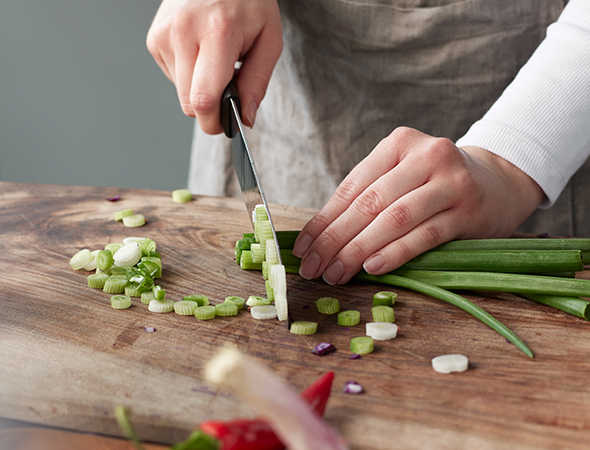


Welche Arten der Fermentation gibt es?
Alcoholic fermentation
Probably the best-known type of fermentation and very widespread. Yeasts in particular play a major role here - and give us wine and beer.
Acetic acid fermentation
If wine is left open for too long, it turns sour: a classic example of acetic acid fermentation, in which acetobacter converts the alcohol into acetic acid.Lactic acid fermentation
The ferments have a typical, slightly sour flavour. Examples are sauerkraut or kimchi.


